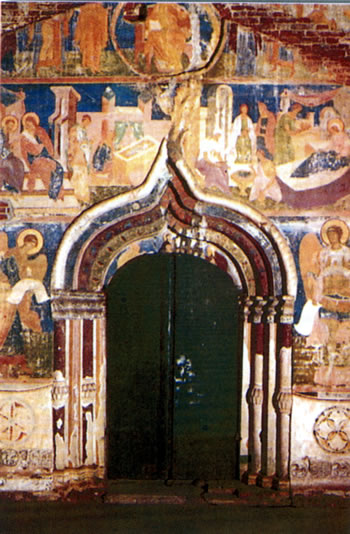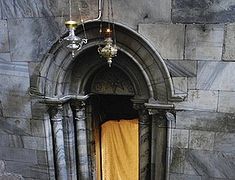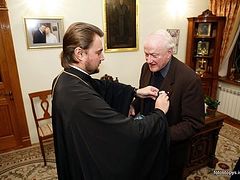Moscow, November 15, 2010
 Door to the main church at Ferapontov, from the gallery.
Door to the main church at Ferapontov, from the gallery.
The decisions adopted by the 34th session of UNESCO World Heritage Commission held in Brazil on July 25 - August 3, 2010 deal with the Ferapontov Monastery inscribed on the World Heritage List in 2000. Ferapontov Monastery is particularly famous for its frescoes, painted by the superlative master iconographer, Dionysy.
The Ferapontov Monastery Museum should "submit to the World Heritage Centre a report on the state of conservation of the property," states the final session document submitted Monday to Interfax-Religion.
The report of the Decisions expresses UNESCO's concern at the extensive restoration and reconstruction projects carried out without prior notification to, or review by, the World Heritage Centre and further requests the Museum to invite UNESCO representatives to monitor the property that has been inscribed on the World Heritage List since 2000.
Furthermore, the Commission invites Russia to establish a special board, including representatives of the Moscow Patriarchate to manage the World Heritage religious properties in the Russian Federation. According to UNESCO, the board functions may include developing "appropriate legal measures, specific conservation, restoration and use rules and a joint management system for the World Heritage religious properties in the Russian Federation."
The report on the above decision should be submitted by February 1, 2011.
The monastery was founded in the Vologda Region in late 14th century and eventually became a large center of cultural development. It was a place of exile for distinguished clerics, such as Patriarch Nikon. Today, the Monastery is a branch of the Kirillo-Belozersky historical and architectural open-air museum.



